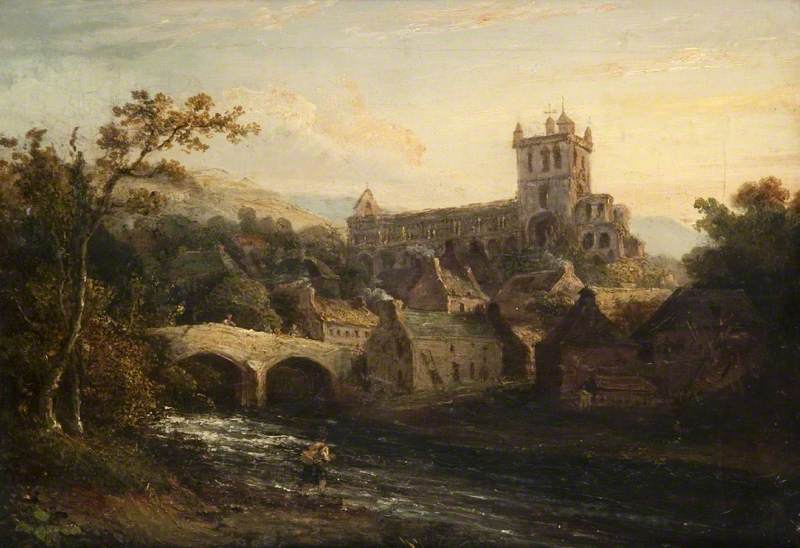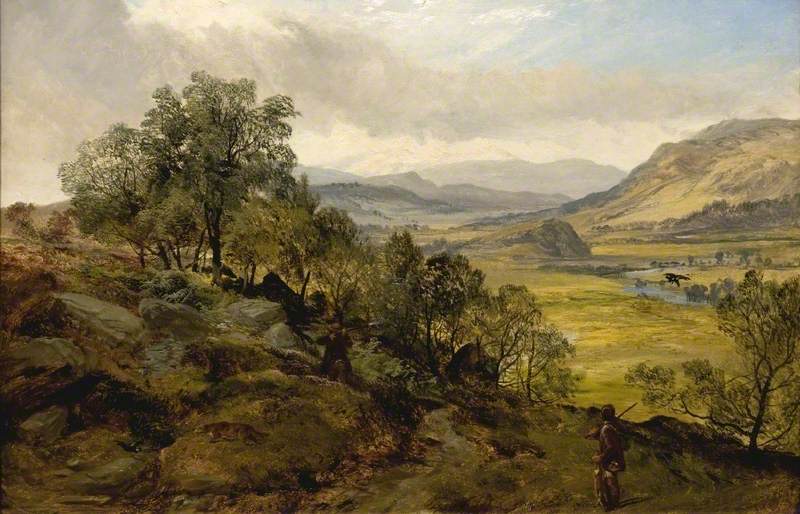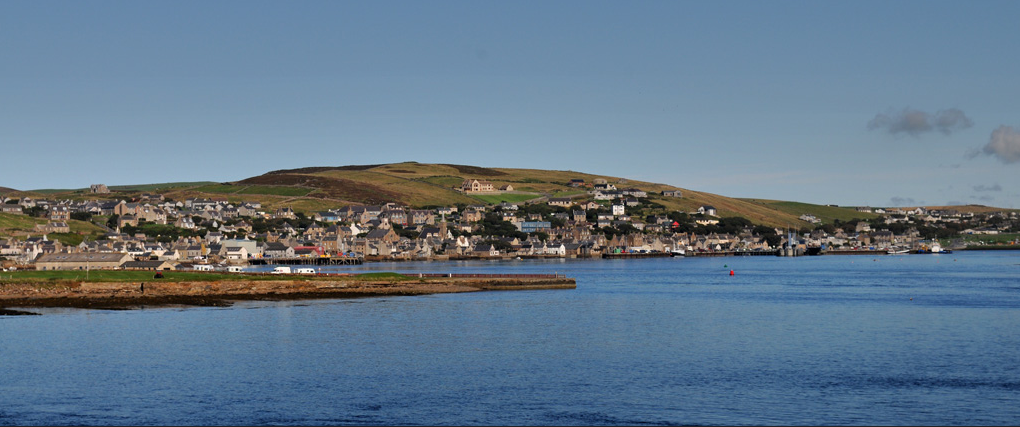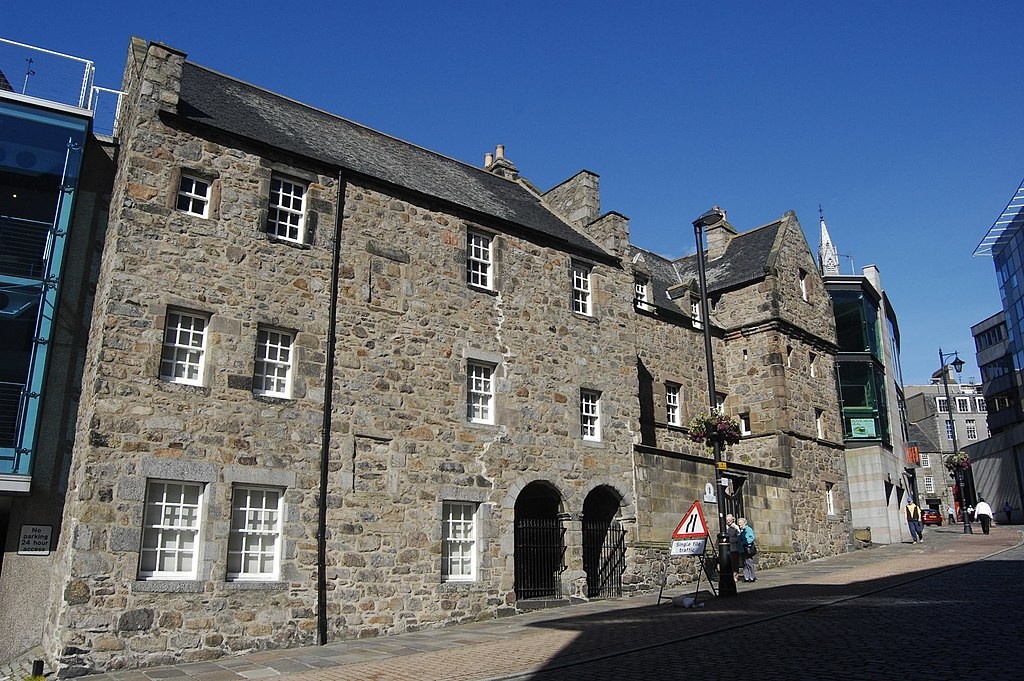In the last post we looked at predominantly Gaelic, Scots and English speaking parishes. But, it is important to note that the other minority languages have impacted on whatever the majority language was, including its pronunciation and intonation. The linguistic landscape of Scotland’s parishes was far from black and white. For some of those writing the parish reports, the jumble of languages used was an unwelcome development, as they saw it as an erosion of the “superior” pure form of language.
Pronunciation
It has been fascinating to find out how people pronounced words. Several parish reports give us a idea of the kinds of sounds produced, in the various Scots dialects in particular. Again, it is other languages which greatly influenced pronunciation.
In Wick, County of Caithness, “the language spoken over all the parish is, with exception of that of some Gaelic incomers, a dialect of the lowland Scottish. It is distinguished, however, by several peculiarities. Wherever the classical Scottish has wh, the dialect of the parish of Wick has f; as fat for what, fan for whan; and wherever the Scottish has u, this dialect has ee ; as seen for sune, meen for mune, feel for fule. Ch at the beginning of words is softened into s, or sh; as, surch for church; shapel for chapel. Th at the beginning of words is often omitted. She, her, and hers are almost invariably used for it and its. This seems a Gaelic idiom; and the tendency to pronounce s and ch, as sh, seems a relic of Gaelic pronunciation.” (NSA, Vol. XV, 1845, p. 144)
Jedburgh, County of Roxburgh – “The common people in the neighbourhood of Jedburgh pronounce many words, particularly such as end in a guttural sound, with a remarkable broad, and even harsh accent. They still make use of the old Scotch dialect. Many of the names of places, however, are evidently derived from the Erse, and expressive of their local situation in that language. For instance, –Dunian, John’s Hill; –Minto, Kids Hill; –Hawick, Village on a River; –Ancrum, anciently called Alnicromb a Creek in the River; etc. etc.” (OSA, Vol. I, 1791, p. 15)
Wilton, County of Roxburgh – “The language generally spoken by the lower orders, throughout this district, contains many provincialisms, but these are becoming gradually obsolete. Two diphthongal sounds, however, seem still to maintain their ground, namely, those resembling the Greek eǐ, and the ow, as in the English words, cow, sow, how, now,–e.g. the common people generally pronounce, tree, treǐ; tea, teǐ; knee, kneǐ; me, meǐ; and, instead of the diphthongal sound of oo in the pronoun you, the pronunciation is almost invariably yow, as in now.” (NSA, Vol. III, 1845, p. 78)
Dalgety, County of Fife – “The language commonly spoken in the parish is the Old Scotch dialect, and there seem to be no peculiar words or phrases which are not in general use throughout most parts of the kingdom. The words are pronounced with a broad accent; and I have often heard in this part of the country a sound given to the diphthong oi, which is not, I believe, so usual in other places: it is frequently pronounced as if it consisted of the letters ou, as for boul boil, pount for point, vauce for voice, etc.” (OSA, Vol. XV, 1795, p. 265)
Caputh, County of Perth – “The Stormont dialect, of course, prevails, in which the chief peculiarity that strikes a stranger is the pronunciation of the Scotch oo as ee, poor being pronounced peer, moon meen, aboon abeen, &c.” (NSA, Vol. X, 1845, p. 677)
Dunlop, County of Ayrshire – “The language which they speak is a mixture of Scotch and English, and has no other singularity, but the slow drawling manner in which it is spoken, and that they uniformly pronounce fow, fai-w, and mow, mai-w.” (OSA, Vol. IX, 1793, p. 541)
Alves, County of Elgin – “The language generally spoken is the Scotch. A stranger is struck with the peculiar vowel sounds, given in a great many words, as wheit for wheat, feel for fool, pure for poor, and wery for very, &c.” (NSA, Vol. XIII, 1845, p. 107)
Montrose, County of Forfar, “One great peculiarity which strikes a stranger from the south, in the language of the common people in this county, and in the neighbouring counties on the north, is the use of f for wh, as fan, far, &c. for when, where, &c. Except by the better classes, the lowland Scotch is universally spoken with a strong provincial accent.” (NSA, Vol. XI, 1845, p. 279)
The Buchan dialect is mentioned in several parish reports from the County of Aberdeen. It is also known as the Doric dialect, and is a sub-dialect of Northern Scots, found in a small area between Banff and Ellon. In Peterhead, County of Aberdeen, “the language spoken in this parish is the broad Buchan dialect of the English, with many Scotticisms, and stands much in need of reformation, which it is to be hoped will soon happen, from the frequent resort of polite people to the town in summer.” (OSA, Vol. XVI, 1795, p. 592) People in the parish of Aberdour, County of Aberdeen, also spoke “the broad Buchan, or real Aberdeenshire, and this dialect is much the same as it was forty years ago.” (NSA, Vol. XII, 1845, p. 266) For more information on the Buchan dialect take a look at the parish report for Longside, County of Aberdeen. (OSA, Vol. XV, 1795, p. 294)
Intonation is also described in some of the parish reports. In Dunfermline, County of Fife, “the language is a mixture of Scotch and English. The voice is raised, and the emphasis frequently laid on the last word of the sentence.”(OSA, Vol. XIII, 1794, p. 479) A similar observation was also made in the report for Lesmahago, County of Lanark. “The language spoken is the broad Scotch dialect, with this peculiarity, very observable to strangers, that the voice is raised, and the sound lengthened upon the last syllable of the sentence.” (OSA, Vol. VII, 1793, p. 433)
Purity
Some writers of the parish reports had a very clear perception of language purity and, conversely, corruption. Inhabitants in many parishes were considered to be speaking a language that was not in its pure and correct form.
- Lochgoil-Head and Kilmorich, County of Argyle – “The Gaelic that is spoken in this place, owing to the frequent communication with the Low Country, is corrupted with a mixture of English words and phrases, and is not so pure, nor so correct, as that which is spoken in the more remote parts of the Highlands.” (OSA, Vol. III, 1792, p. 190)
- Logierait, County of Perth – “The language spoken here, is a corrupted dialect of the Gaelic. The Saxon dialect of the lowlands is, however, pretty generally understood here.” (OSA, Vol. V, 1793, p. 82)
- Comrie, County of Perth – “All the young people can speak English; but, in order to acquire it, they must go to service in the Low Country. The Gaelic is not spoken in its purity, neither here nor in any of the bordering parishes.” (OSA, Vol. XI, 1794, p. 186)
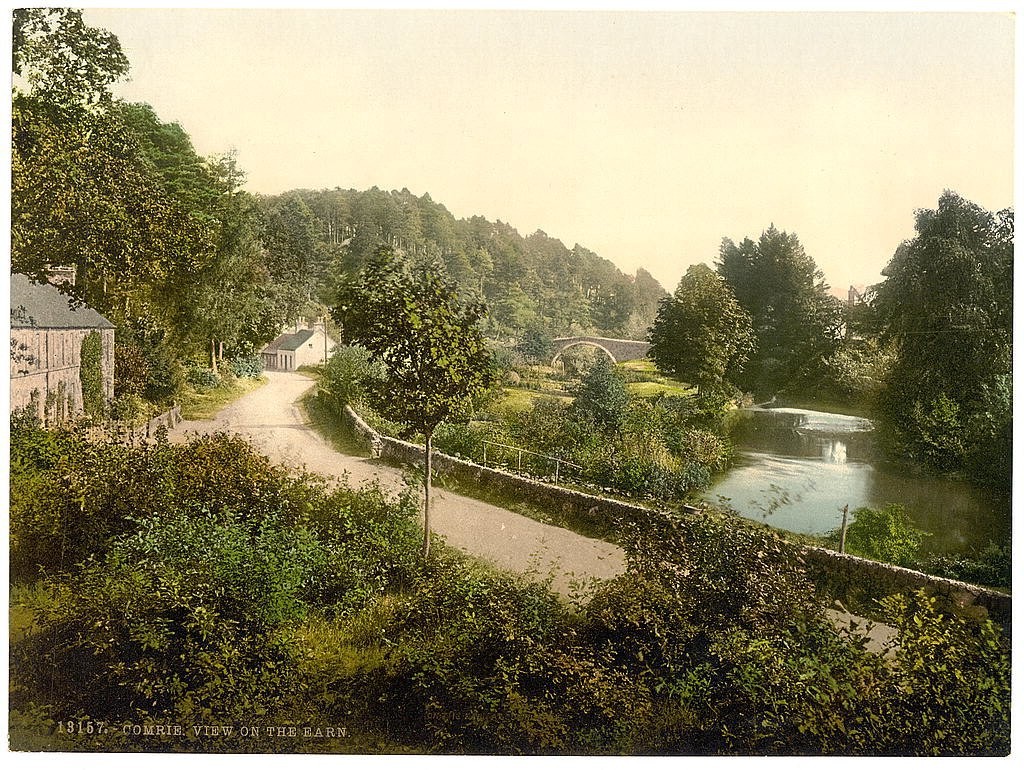
View on the Earn, Comrie, Scotland. Taken between ca. 1890 and ca. 1900. By The Library of Congress [No restrictions], via Wikimedia Commons.
- Fortingal, County of Perth – “The Gaelic is the language of the natives. It is, however, losing ground, and losing its purity, very much of late. Forty years ago, in some parts of the parish, especially in the district of Rannoch, it was spoken in as great purity as in any district of the Highlands. That race of genuine natives having disappeared, many of their phrases and idioms have become almost unintelligible to the rising generation. It is, however, gratifying to the antiquary and to the lover of Celtic literature, that so much has been done to rescue the language and insure its permanency and stability; still all that is practicable has not yet been achieved. Hundreds of vocables might be collected which have escaped the notice of the several learned compilers of our Gaelic dictionaries.” (NSA, Vol. X, 1845, p. 553)
- Halkirk, County of Caithness – “[Erse] is much corrupted, but yet spoken with great fluency and emphasis, and not without harmony of sound. [English] has also many words, which are neither English nor Scotch, yet, according to its idiom, it is spoken with great propriety, and the sentiments are expressed by it, either in narration or description, as intelligibly and significantly, as in any county in Great Britain, nay, I dare say, more so than in most of them. These languages are spoken in various degrees.” (OSA, Vol. XIX, 1797, p. 62)
- Eddlestone, County of Peebles – “The language generally spoken is a corrupt Scotch, with a barbarous admixture of English. A few only of the oldest of the people speak the Scottish dialect in its purity. These, however, are rapidly disappearing, and in a few years more in all probability there will not be one person alive who could have held converse with his grandfather without the aid of a dictionary.” (NSA, Vol. III, 1845, p. 149)
- Evie and Rendall, County of Orkney – “In the language of the people, there is an intermixture of Norse words with Scotch and English; but, on the whole, they speak more correctly than the peasantry do in other parts of Scotland. The accent is peculiar though far from being unpleasant.” (NSA, Vol. XV, 1845, p. 202)
In the parish report for Kilmalie, County of Inverness, it was noted that “it is remarkable, yet not the less true, that the illiterate Highlander, who is a stranger to every other language but the Gaelic, speaks it more fluently, more elegantly, and more purely, than the scholar.” (OSA, Vol. VIII, 1793, p. 430)
In some cases, inhabitants were strongly criticised for speaking impure languages, especially those of Kilmadock, County of Perth!
- Kirkmichael, County of Perth – “The prevailing language in the parish is the Gaelic. A dialect of the ancient Scotch, also, is understood, and currently spoken. These two, by a barbarous intermixture, mutually corrupt each other.” (OSA, Vol. XV, 1795, p. 516)
- Kilmadock, County of Perth – “The language of the common people in this parish, like many of the parishes in the neighbourhood, is a mixture of Scotch and English. This jargon is very unpleasant to the ear, and a great impediment to fluent conversation. No language is more expressive than the Scotch, when spoken in perfection; and, though the ancient be short and unmusical, yet it is by no means disagreeable to hear two plain country men conversing in the true Scotch tongue; but, in this parish, you seldom meet with such instances... In the quarter towards Callander, the generality of the inhabitants speak Gaelic; and this is perhaps still more corrupt than even the Scotch, in the other quarters of the parish. It is impossible to conceive any thing so truly offensive to the ear, as the conversation of these people. The true Gaelic is a noble language, worthy of the fire of Ossian, and wonderfully adapted to the genius of a warlike nation; but the contemptible language of the people about Callander, and to the east, is quite incapable of communicating a noble idea… It ought, therefore, to be earnestly recommended to the people of this parish, and, indeed, to other parishes in that quarter, to study a more perfect style; either to practice the true Gaelic, the true Scotch, or the true English tongue. But all kinds of civilization in society go hand in hand; and when arts and sciences begin to flourish here, the language will gradually polish and refine.” (OSA, Vol. XX, 1798, p. 53)
Language trends
A couple of parishes reported a particularly interesting development, that of younger Gaelic speakers interspersing their language with English or Scots words. In North Uist, County of Inverness. “The language spoken is the Gaelic, which the people speak with uncommon fluency and elegance. One fifth of the whole population above the age of twelve years understand and speak English. Such of them as are in the habit of going to the south of Scotland for trading or for working, are fond of interlarding some English or Scotch phrases with their own beautiful and expressive language. This bad taste is confined to so limited a number, that it has but slightly affected the general character of their native tongue. There are only five individuals in the parish who do not understand the Gaelic, and some of these have made considerable progress in its attainment.” (NSA, Vol. XIV, 1845, p. 172) In Gairloch, County of Ross and Cromarty, “some young men, indeed, who have received a smattering of education, consider they are doing great service to the Gaelic, by interspersing their conversation with English words, and giving them a Gaelic termination and accent. These corrupters of both languages, with more pride than good taste, now and then, introduce words of bad English or of bad Scotch, which they have learned from the Newhaven or Buckie fishermen, whom they meet with on the coast of Caithness during the fishing season. The Gaelic, however, is still spoken in as great purity by the inhabitants in general, as it was forty years ago.” (NSA, Vol. XIV, 1845, p. 95)
In some cases, however, the impure form of language at least made it easier for certain groups of people to understand. In Rogart, County of Sutherland, “a considerable proportion of the inhabitants, however, can converse in the English language; and, in a few years it is likely that none may be found who cannot do so. Their English, being acquired from books, and occasional conversation with educated persons, is marked by no peculiarity, except a degree of mountain accent and Celtic idiom; so that it is more easily intelligible to an Englishman than the dialect spoken by the Lowland Scotch.” (NSA, Vol. XV, 1845, p. 51)
Conclusion
Languages are very fluid, with changes occurring over time in vocabulary, pronunciation and intonation. In some parish reports there are some strong comments bemoaning the lack of language purity, but the pure form of a language is an ideal, not a reality. This is certainly the case in Scotland where the Gaelic, Scots, English and Scandinavian languages influenced each other.
Changes were even felt between the first and second Statistical Accounts of Scotland, most notably the increased comprehension and use of English. In the final post on Scotland’s languages we look look more closely at the reasons for linguistic change.
